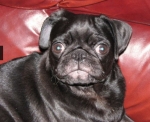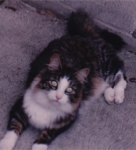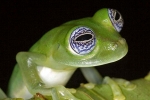So... this was worth it! I called the Customer Service # (that was 866-501-3705, again 866-501-3705, and tell 'em Penny sent ya!

) and this was what was emailed to me.
Pros: the information is useful. I did not know what I did not know. I appreciate any and all opportunities to use my inner birddog skillz.
Cons: I shoulda negotiated getting paid for every time the name SoClean gets used! But if you sign up on my downline.... *ahem*
Q: What is activated oxygen?
A: Activated oxygen also known as ozone, or O3 is defined by MerriamWebster dictionary as: 1. a form of oxygen that is found in a layer high in the earth’s atmosphere. 2. fresh healthy air especially near the sea. Activated oxygen is a three atom oxygen molecule. This three atom molecule is a colorless gas with powerful oxidizing properties, formed from oxygen by electrical discharges or ultraviolet light. It differs from normal oxygen (O2) but over time or with forced filtration, will break back down to normal oxygen (O2) that we breathe. Many become confused over the term ozone. There is good ozone and there is bad ozone. Most commonly used is bad ozone which is linked to high ozone alerts or smog alerts in certain areas of the world. This kind of ozone is mixed with toxic gases that can be breathed in. Good ozone is found in our upper atmosphere or you may smell the essence of ozone after a thunderstorm. Activated oxygen (ozone) is known as one of the best and most effective means to natural disinfection. This process is commonly used in array of applications such as public water filtration, fruit and vegetable handling, hotel housekeeping, and hospital disinfection. Please see common FAQs to learn more about activated oxygen (ozone) or see activated oxygen in SoClean to learn how the SoClean safely disinfects your CPAP equipment.
Q: Is ozone/activated oxygen really safe?
A: Activated oxygen, also called ozone or O3 occurs in nature. It is produced and used commercially in applications for sanitizing produce, waste and drinking water. The SoClean is designed to keep the activated oxygen enclosed in your CPAP equipment and the secure chamber. And, when the sanitizing process is complete, the ozone turns back into regular oxygen.
Q: Isn't activated oxygen ozone?
A: Yes. These terms are interchangeable and mean the same thing.
Q: What is the concentration of ozone inside the SoClean CPAP cleaner and sanitizer?
A: SoClean uses enough ozone to thoroughly sanitize your CPAP equipment and by the time you open the chamber it will have decreased to 0 ppm.
Q: How does the SoClean produce activated oxygen? Do I have to buy supplies for it?
A: The SoClean produces the activated oxygen on its own. Regular oxygen from the air is taken in and converted to activated oxygen, O3, for the sanitizing/cleaning process. The filter in the chamber converts it back to regular oxygen, O2, before it exits the chamber.
Q: Why do I smell ozone while the SoClean is running?
A: Please make sure the SoClean lid is shut securely and that your CPAP cleaner and sanitizer is connected to the SoClean securely. Some ozone molecules may escape into the air, but they will be so dispersed in the volume of air in the room, and will not pose a hazard.
Q: There is a strong odor after using my SoClean.
A: Sometimes you may experience a strong odor after running the SoClean for the first time. This is a byproduct of the oxidation with activated oxygen of the old materials that may have been used to clean your CPAP equipment in the past, such as vinegar or scented soaps. It may also occur when a new piece of CPAP equipment is introduced to the SoClean for the first time. The odor will decrease with time. To help the odor go away faster, you may increase the cleaning time to 11 minutes for a few weeks and then decrease the time back to 7 minutes. You can also run your CPAP for 10 minutes before using. These steps will help the odor to decrease quicker.
Thank you, Pugsy! I am now an informed consumer, and that means everything to me.











